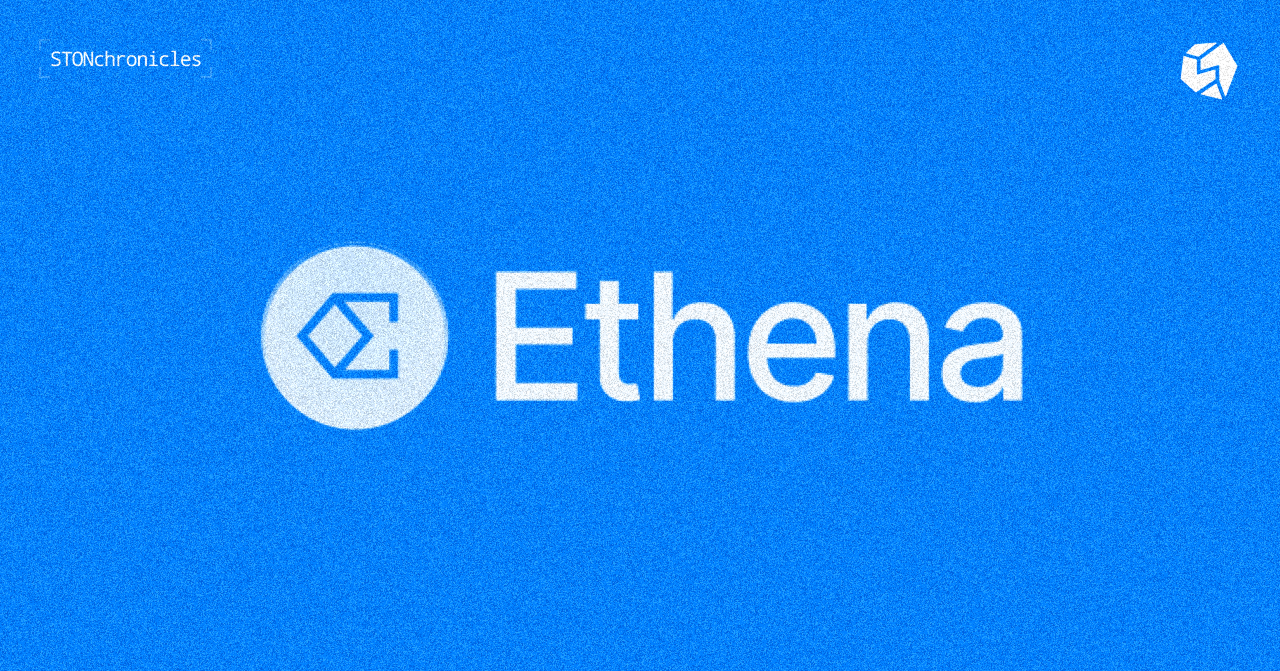
Ethena’s synthetic dollar, USDe, has launched on the TON blockchain — the native infrastructure of Telegram’s 1B+ user base. This isn’t just another stablecoin integration. It’s a bold step that merges sophisticated decentralized finance with the most accessible messaging ecosystem in the world.
In this article, we’ll walk you through:
- Ethena’s APY Boost: Ongoing Extended Campaign
- What USDe, tsUSDe, and USDt are
- How Ethena works
- Why this matters for users and liquidity providers
- How to start participating and earning rewards
To further bridge the gap between messaging-based ecosystems and decentralized finance, Ethena has teamed up with the TON Foundation to provide USDe, its synthetic currency, on the TON blockchain. The ecosystem now offers smooth trading, staking, and liquidity provision for three key tokens: USDt, USDe, and tsUSDe.
STON.fi serves as the main DEX that facilitates these interactions. Let’s examine how these assets function, their connections, and the practical implications for both liquidity suppliers and customers.
🔥Ethena’s APY Boost: supercharging tsUSDe liquidity on TON
Starting July 14, 2025, Ethena’s rewards program on ethena.ston.fi offers up to 10% additional APY paid in TON for users staking USDe to hold tsUSDe or providing liquidity in the tsUSDe/USDe pool on STON.fi.
What you need to know:
- Enhanced rewards: Earn up to 10% extra APY in TON on top, for either holding tsUSDe or providing liquidity in the tsUSDe/USDe pool
- How to earn:
- Hold tsUSDe by staking USDe on ethena.ston.fi.
- Provide liquidity in the tsUSDe/USDe pool to gain trading fees plus the additional APY.
- Verify with TON ID for eligibility (one-time setup)
- Program details:
- Beginning July 14, the program launched as a 4-week campaign with rewards accruing daily. It has since been extended and remains active — check the Ethena landing page for the current status.
- Weekly TON airdrops automatically sent to eligible wallets.
- Participate in rewards for up to 10,000 tsUSDe balance.
- Eligibility: Verify with TON ID (one-time setup). The minimum payout is 0.1 TON.
- Note: APY rates may decrease as total value locked (TVL) grows, so early participation is key.
Watch the video to learn how to gain up to 10% extra APY on your USDe staking
Why bring USDe to TON?
TON (The Open Network) is the blockchain infrastructure originally proposed by Telegram and now maintained by the open-source community with active backing from the TON Foundation. With Telegram’s 1+ billion users, any integration with TON has the potential for massive distribution and real-world usage.
But beyond scale, the TON blockchain offers:
- Low transaction fees
- Fast finality
- Deep Telegram integration via bots and wallets
- Growing ecosystem of mini-apps and DeFi tools
By bringing USDe to TON, Ethena connects DeFi-native value systems to users who are already immersed in Telegram’s digital environment. This could onboard millions of new users to DeFi without needing to touch Ethereum or navigate Web3 complexity.
Ethena’s model: synthetic dollars without banks
To understand the significance of USDe, it’s worth briefly looking at Ethena’s broader design.
Unlike fiat-backed stablecoins like USDC or USDT, USDe is a synthetic asset. Its peg is maintained through delta-neutral strategies involving spot ETH and short ETH perpetual futures.
This design provides:
- Censorship resistance (no reliance on fiat custodians)
- Scalability (independent of bank deposits)
This design is particularly relevant given the increasing regulatory scrutiny on fiat-backed stablecoins. A synthetic alternative like USDe, while more complex, provides a viable hedge against centralization risks.
Understanding the core tokens: USDt, USDe, and tsUSDe
At the heart of this rollout are three related assets:
- USDt (Tether) — centralized stablecoin; widely used on TON and EVMs networks.
- USDe — synthetic dollar issued by Ethena, pegged algorithmically.
- tsUSDe — tokenized staked USDe that accrues rewards and unlocks DeFi functionality.
Why is tsUSDe so special?
Where Ethena adds another layer of interest is through its reward system, which encourages not just holding but participating — either by staking or providing liquidity. This is where tsUSDe plays a key role.
When users stake USDe through Ethena, they receive tsUSDe in return. This staked token accrues rewards and acts as a placeholder for the original USDe. But since unstaking takes 7 days, DEX liquidity becomes critical. With sufficient pool depth, a user can trade out of tsUSDe instantly, avoiding the cooldown period.
STON.fi is facilitating this with the following trading pairs:
- USDt-USDe — the primary entry and exit ramp
- TON-USDe — the secondary entry and exit ramp
- USDe-tsUSDe — allows conversion without leaving the ecosystem
These pools aren’t just functional — they’re incentivized.
How to get started with USDe/tsUSDe
Here’s a simple flow of how a user might engage with these tokens:
- Start with USDt
- Swap USDt (or TON) → USDe on STON.fi
- Stake USDe to get tsUSDe
- Hold tsUSDe to accrue staking rewards
- Provide liquidity in USDe/USDT or other available pools
Reversing this flow is slightly more involved:
- Hold tsUSDe
- Unstake to retrieve USDe
- Swap USDe → USDt on STON.fi
- Use or withdraw USDt
While the unstaking process takes 7 days, liquidity on STON.fi allows users to bypass the wait by swapping tsUSDe directly if there is sufficient liquidity. That’s why pairs like USDe-tsUSDe are important beyond just technical completeness — they enable real-time user needs.
The Ethena Points system and potential rewards
Ethena’s reward model revolves around Points, distributed based on user staking and liquidity provision activity in USDe and updated each biannual season. These Points are later redeemable for $ENA, the protocol’s native token.
Example scenario
Let’s say you decide to swap 1000 USDt for USDe and select to stake and provide liquidity at 50/50 ratio for 6 months. You’d earn Points as follows:
- 2.5K points daily (x5 multiplier) for staking
- 15K points daily (x30 multiplier) for liquidity provision
- Yields: 3.15 million points
Assuming an airdrop pool of $285M:
- 1 Point ≈ $0.0000094
- 3.15M Points = ~$29.61
Do note: These numbers are not fixed. The actual APY will fluctuate based on ENA market value, airdrop allocation, and the total pool of Points. Still, even with these uncertainties, the rewards system creates meaningful yield opportunities for early adopters who contribute liquidity.
Final thoughts
This launch marks the convergence of two paradigms:
- The composability and innovation of DeFi
- The mass accessibility of Telegram
For it to work, two things are key:
- Deep liquidity (for frictionless swaps)
- Ongoing user incentives (to bootstrap adoption)
If successful, this rollout could define a new playbook for scaling DeFi: not through Web3-native channels alone, but through social platforms where the next billion users already live. Start exploring pools and staking: https://ethena.ston.fi





